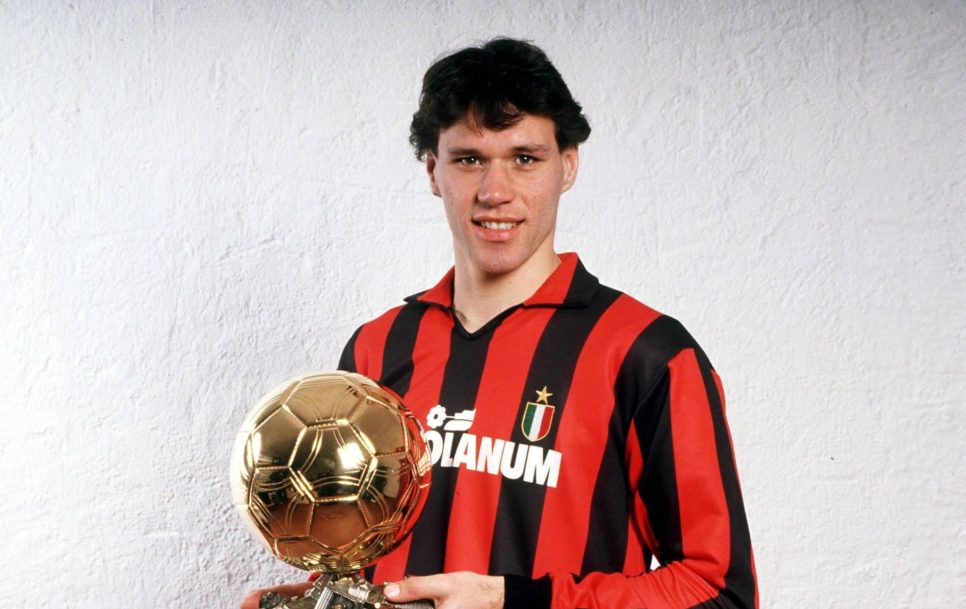Marco van Basten: how football’s brightest star dimmed too soon
Every football fan knows Marco van Basten’s wonder goal in the 1988 Euros final, but not everyone knows that the Dutchman’s brilliant career ended when he should have been at the peak of his powers.
The striker, who made a name for himself at Ajax Amsterdam, was among the most dangerous goal scorers and the best players of the 80s and 90s. His statistics, especially at the Dutch powerhouse, were particularly impressive, with van Basten scoring 128 goals in 133 league matches.
In 1987, the striker left the Netherlands and joined AC Milan alongside his compatriot Ruud Gullit. The signing of the Dutch duo brought the club its first Serie A title in eight years, and the following summer, Milan added a third Dutchman, Frank Rijkaard, to complete their legion.
Over six seasons, van Basten became Serie A’s top scorer twice, led his team to back-to-back Champions League titles, and came close to a third in 1993, when Milan was defeated by the underdog Olympique Marseille.
The final, played at the Munich Olympic Stadium—where he scored THAT goal five years earlier against the Soviet Union—would be van Basten’s last game.
He was only 28 years old.
Cruyff asked him to play
Van Basten’s problems began in December 1986. He injured his ankle, and although the feared striker was in severe pain, Ajax’s then-coach Johan Cruyff agreed he could skip some training sessions and matches but would be needed for the UEFA Cup Winners’ Cup games.
The striker obeyed, carried Ajax to victory in the quarter-final rematch against Sweden’s Malmö, and scored the only goal in the final against Lokomotive Leipzig.
The trophy made van Basten happy, but playing took a toll on his body.
In hindsight, the striker should have taken a break and ignored Cruyff’s request. Still, van Basten bears no grudges but has said that he played injured too often and received bad advice from doctors both at Ajax and Milan. His first surgery was performed on the advice of a Spanish doctor.
His first surgery came too late. “The damage was already done,” van Basten noted. Numerous operations over the years didn’t fix his ankle; they only helped prolong his career.
Until Basile Boli’s tackle ended it for good.
The Ivorian-born French defender was a hero and an anti-hero of the 1993 Champions League final. In the 44th minute, his header converted Abedi Pele’s corner kick into the match’s only goal, but 42 minutes later, he brought down van Basten from behind.
Another surgery was inevitable. Van Basten missed the following season but hoped to be back for the 1994 World Cup, though Milan insisted he skip the tournament. The club feared that the World Cup would hinder the Dutchman’s recovery.
In his autobiography, van Basten recalled that recovering from the surgery following Boli’s tackle felt like hell. He was in immense pain and had to crawl to the bathroom.
Van Basten tried to return to football for two years but gave up in August 1995. His career was officially over, even though he was only 30 years old.
Although van Basten no longer suffers from pain, the injury still affects his life today. For example, the Dutchman cannot play tennis or football but is grateful that he can play squash.
A great player, a poor manager
Although van Basten’s career ended prematurely, he left an unforgettable mark on football. He is considered one of the best and most complete strikers ever known for his acrobatic goals, raw power, speed, and intelligence. Van Basten, known as the Swan of Utrecht due to his birthplace and style of play, is also one of the most accurate penalty-takers in football history, converting 53 of his 57 spot kicks.
Van Basten was not praised just by statistics but also by his peers. Napoli legend Diego Maradona, who played alongside him in Serie A, does not know who the best player he has ever seen is. The Argentine does know it’s either van Basten or Brazilian striker Romario.
Giuseppe Bergomi, who spent his entire career at Inter Milan, considers Maradona the best player ever but sees van Basten as the strongest. “At least I could beat Maradona in the air,” said the Italian.
While van Basten was almighty on the pitch, his managerial career was far from it. He has admitted that he was a poor boss because he couldn’t tolerate losses, and the pressure of being a head coach caused stress, which brought mental and physical issues.
Perhaps van Basten’s greatest weakness as a manager was his relationship with players. Before the 2008 Euros, midfielders Clarence Seedorf and Mark van Bommel declared they would not play for the Netherlands under his leadership. At the 2006 World Cup, the former striker fell out with Ruud van Nistelrooy, who also stayed away from the national team for a while.
But those years have not tarnished his legacy. Van Basten, the player, was so good that he must be considered one of the greatest strikers football has ever seen.







